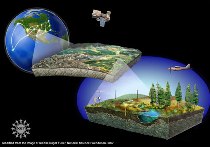Exploring the population dynamics of wintering bald eagles through long-term data
Author(s): Jeremy Davis
University of Washington Tacoma
1869 total view(s), 294 download(s)
Bundle(ZIP | 501 KB)
- License terms
Description
The module and supplements were implemented at the University of Washington Tacoma by Jeremy Michael Davis.
- Course: TESC 332. Conservation Biology in Practice
- Course Level: This course is currently being transitioned to the 400 level. Students are expected to be able to work with Excel with minimal instruction. Most were familiar with the basic ideas of regression analyses, but had only completed them with a full set of instructions.
- Instructional Setting: Lab & Lecture
- Implementation Timeframe: One 2.5 hour session followed by independent work
Notes
I created a sort of hybrid approach. I pre-tested two ideas, one using a regression approach, and one with an ANOVA. This allowed the students to become familiar with the dataset, and start thinking about potential analyses for their final projects. About half of the students chose to use the eagle data for their final projects. In my favorite project, the student used NOAA data to get nationwide yearly temperatures, and then explored the relationship between winter bald eagle numbers and temperature at 2 northern sites (Idaho and Washington), and 2 southern sites (Texas and Arizona).
As she predicted, based on the hypothesis that eagles only fly so far south as they need to reach a particular temperature, she found that temperature had no impact on northern site numbers, but a strong negative impact on southern site numbers.
Cite this work
Researchers should cite this work as follows:
- Davis, J. (2017). Exploring the population dynamics of wintering bald eagles through long-term data. ESA Data Discovery FMN (2017), QUBES Educational Resources. doi:10.25334/Q4059G
